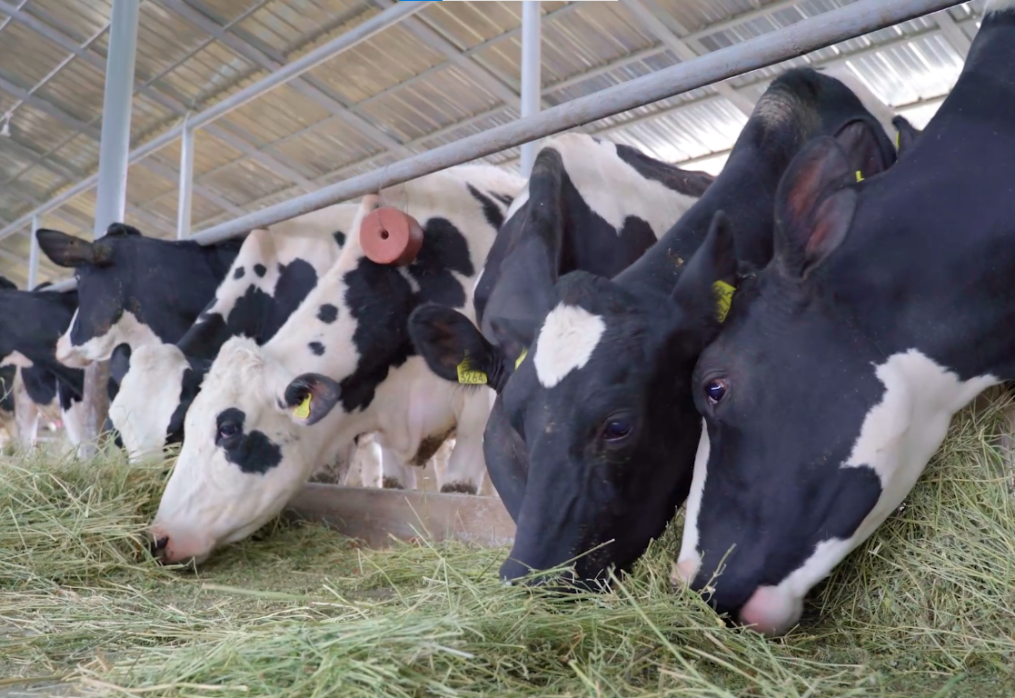Balancing Rations and Incorporating Maize Silage into Dairy Cow Diets
Achieving optimal milk production and maintaining cow health requires a well-balanced and nutritionally sound diet for dairy cows. One key component of a balanced ration is incorporating high-quality forages such as maize silage. In Kenya, where maize is a widely cultivated crop, maize silage offers dairy farmers an excellent opportunity to enhance cow nutrition and overall herd performance. Here, we will explore the importance of balancing rations and provide valuable insights on effectively incorporating maize silage into dairy cow diets.
- Understanding Ration Balancing:
Ration balancing involves formulating a diet that meets the specific nutritional requirements of dairy cows. It ensures that cows receive the appropriate amounts of energy, protein, fiber, minerals, and vitamins necessary for optimal milk production, reproduction, and overall health. Balancing rations involves considering the nutrient composition of different feed ingredients, including forages, concentrates, and supplements, and formulating a diet that meets the cow’s specific needs at different stages of lactation.
- Benefits of Maize Silage in Ration Balancing:
Maize silage plays a crucial role in ration balancing for dairy cows due to its favorable nutrient profile and versatility. Incorporating maize silage into the diet offers several benefits, including:
a) Energy Source: Maize silage is a high-energy forage option due to its starch content, making it an excellent source of readily available energy for dairy cows. By incorporating maize silage into the ration, farmers can provide cows with the necessary energy to support milk production and meet their metabolic needs.
b) Protein Contribution: While maize silage is not particularly high in protein compared to other forages, it still contributes a significant amount to the cow’s protein requirements. Combining maize silage with protein-rich concentrates or other forages can help achieve the desired protein levels in the diet and maintain a balanced ration.
c) Fiber Content: Maize silage contains fiber, which is crucial for rumen health and proper digestion. The fiber in maize silage provides the necessary roughage to maintain rumen function and stimulate rumination. Balancing rations with an appropriate fiber source such as maize silage helps prevent digestive disorders and supports optimal cow health.
d) Cost-Effective Forage: Maize silage offers cost advantages for dairy farmers. As maize is a widely cultivated crop in Kenya, producing and utilizing maize silage reduces the dependence on purchasing expensive commercial feeds. By incorporating maize silage into the diet, farmers can lower production costs and enhance profitability.
- Incorporating Maize Silage into Dairy Cow Diets:
Incorporating maize silage effectively into dairy cow diets requires careful planning and consideration of various factors. Here are some key considerations to ensure successful integration:
a) Nutrient Analysis: Conducting nutrient analysis of maize silage is crucial to determine its specific nutrient content, including dry matter, energy, protein, and fiber levels. This information enables dairy farmers to calculate the appropriate inclusion rate in the diet and ensure balanced rations.
b) Ration Formulation: Working with a qualified nutritionist or utilizing ration formulation software can assist in developing well-balanced diets. Consider the nutritional requirements of the cows based on their stage of lactation, milk production levels, and body condition scores. Balancing rations involves adjusting the proportions of maize silage, other forages, concentrates, and supplements to meet the specific needs of the herd.
c) Feed Quality Control: Regularly monitor the quality of maize silage to ensure consistency and prevent nutritional imbalances. Conducting feed tests, such as dry matter analysis, fiber analysis, and mycotoxin screening, helps in identifying any potential issues and taking corrective measures.
d) Transitioning Period: When introducing maize silage into the diet, it is essential to allow for a gradual transition to minimize digestive upsets. Gradually increase the inclusion rate of maize silage over a period of 7 to 14 days, allowing the rumen microbes to adapt to the new feed.
e) Feed Management: Proper feed management practices are crucial for maximizing the benefits of maize silage. Ensure proper storage and handling techniques to maintain its quality. Pay attention to feed bunk management, ensuring adequate access to fresh and clean feed throughout the day.
- Monitoring and Adjusting:
Regular monitoring of cow performance and feed intake is essential to evaluate the effectiveness of the ration and make any necessary adjustments. Monitor milk production, body condition scores, reproductive performance, and overall cow health. Regularly assess the quality of maize silage and adjust the ration formulation as needed to maintain optimal cow nutrition.
Balancing rations and incorporating maize silage into dairy cow diets is a strategic approach that can significantly enhance milk production, cow health, and overall farm profitability for dairy farmers in Kenya. Maize silage offers a cost-effective and nutritionally rich forage option that provides the necessary energy, protein, and fiber for optimal cow performance. By understanding the principles of ration balancing, conducting nutrient analysis, and implementing proper feed management practices, dairy farmers can successfully integrate maize silage into their feeding programs and achieve sustainable success in their dairy operations.
